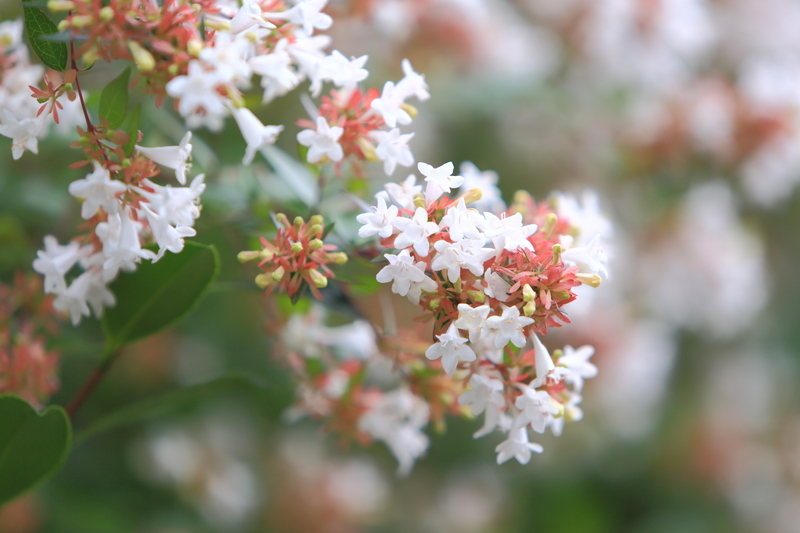Converting Windy Weather into Garden Success
Posted on 02/07/2025
Converting Windy Weather into Garden Success: Harnessing the Power of the Breeze
Wind is a force of nature many gardeners dread, but what if you could transform this challenge into an opportunity? Converting windy weather into garden success is not only possible, but can also improve your plants' health, increase yields, and create a resilient ecosystem. Whether you garden on a blustery hilltop or in an urban area exposed to strong seasonal gusts, harnessing wind's potential can make your garden thrive. This comprehensive guide explores effective strategies, plant choices, and smart designs to help you make the most of breezy conditions.

Understanding Wind's Impact on Gardens
Before you can start transforming windy conditions into garden advantages, it's crucial to understand how wind affects your garden ecosystem. Wind can have positive and negative outcomes for your plants:
- Evaporation: Wind increases the evaporation of water from soil and leaf surfaces, which can lead to drought stress for many plants.
- Physical Damage: Strong gusts may break stems, uproot seedlings, or cause fruit drop.
- Temperature Regulation: Breezes cool hot gardens but can also exacerbate frost damage in cold snaps.
- Improved Air Circulation: Windy gardens benefit by reducing fungal diseases and mildew, as air moves moisture away from leaf surfaces.
- Pollination: Many plants rely on breezes for natural pollination, especially grasses and some fruit trees.
By understanding these effects, gardeners can transform windy weather into a garden's secret weapon, rather than a source of frustration.
Planning a Wind-Resilient Garden Layout
Site Assessment: Know Your Wind Patterns
Every garden is unique. Start by observing prevailing weather patterns in your area. Note:
- Direction of strongest winds throughout the year
- Wind speed during storms or seasonal changes
- Natural or built windbreaks (fences, buildings, hedges)
- Microclimates - sheltered spots, exposed ridges, etc.
Mapping these factors helps you design an effective wind-optimized garden.
Creating Windbreaks and Shelterbelts
One of the most effective strategies for turning windy weather into an advantage is planting or installing windbreaks. These can be:
- Living Hedges: Rows of sturdy evergreen or deciduous shrubs/trees
- Fences and Screens: Permeable materials like willow hurdles or mesh are best; solid walls can cause damaging turbulence
- Earthworks: Berms, mounds, or raised beds strategically placed to divert wind flow
Key Tip: The best windbreaks slow wind down, rather than blocking it entirely. For optimal results:
- Plant windbreaks at a right angle to prevailing wind
- Choose plants with dense, but permeable, foliage
- Windbreaks should be 8-10 times as long as their height to protect a large area
Garden Layout: Maximizing Protection and Productivity
Arrange your garden beds, structures, and plantings to make the most of the calm zones behind windbreaks. Place delicate crops and young seedlings in these sheltered microclimates. Use sturdy, wind-tolerant plants as natural buffers in more exposed sections.
Choosing Wind-Resistant Plants for Success
Traits of Wind-Adapted Plants
Not all plants thrive in blustery sites, but plenty are well-suited for these conditions. Look for:
- Flexible stems and branches that bend without breaking
- Small, tough leaves which reduce wind drag and water loss
- Low-growing or mat-forming growth habits
- Deep, robust root systems for anchorage
Drought-resilient, coastal, alpine, and prairie species often exhibit these characteristics and make great candidates for wind-exposed gardening.
Best Wind-Tolerant Plants
Both ornamental and edible gardens can flourish with the right selections. Here are some excellent choices:
Ornamentals:- Lavender (Lavandula)
- Russian Sage (Perovskia atriplicifolia)
- Sea Thrift (Armeria maritima)
- Junipers, Pines, and Hardy Native Grasses
- Hebe, Escallonia, and Photinia (great for hedges)
- Chard, Kale, and Spinach
- Strawberries (hug the ground)
- Root crops: Carrots, Radishes, Beets
- Currants and Gooseberries
- Wind-pollinated grains (corn, wheat, rye)
Pro Tip: Mix these reliable survivors into borders and exposed beds to create a protective patchwork for more delicate plants.
Soil and Water Management in Windy Gardens
Combating Excess Evaporation
Wind increases evaporation rates, quickly drying out exposed soil. To minimize moisture loss and optimize growth:
- Apply thick mulches (straw, bark, compost) around tender plants
- Use groundcovers to shield soil from direct wind
- Water early in the morning or late in the day to reduce evaporation
- Drip irrigation and soaker hoses target roots and minimize surface loss
Soil Structure and Wind Erosion
Wind can strip away precious topsoil, especially on bare ground. Protect your garden beds with these strategies:
- Regularly add organic matter to improve structure and stability
- Keep areas covered with crops, cover crops, or mulch year-round
- Install low barriers or plant grass strips on windy slopes to slow erosion
Feeding the Breeze: Fertility Tips for Exposed Gardens
Nutrients can leach or blow away more rapidly in windy areas. Ensure steady plant growth with:
- Slow-release organic fertilizers
- Frequent small applications of compost
- Extra attention to potassium and magnesium, which support plant resilience
Physical Supports and Smart Structures
Staking and Training Plants
Even wind-adapted plants may need help, especially when young or fruiting heavily. Consider:
- Stakes and Cages: Use bamboo canes, sturdy branches, or steel cages for tall vegetables and flowers
- Netting and Tunnels: Protect seedlings and small plants with bird netting or mesh tunnels (secure them well!)
- Trellis Training: Spread the load and use flexible ties to allow movement without breakage
Remember: Always allow room for natural sway; too rigid a support can cause stems to snap in strong gusts.
Wind-Optimized Greenhouses and Polytunnels
If you use a greenhouse or polytunnel, position it where wind is less intense or use windbreaks for shelter. Always:
- Anchor firmly to the ground
- Install shatter-resistant panels or reinforced film
- Ventilate to minimize wind-driven pressure build-up
Turning Wind into a Gardening Asset
Natural Pollination
Wind is a critical pollinator for some crops--grains, corn, and many grasses could not ripen without breezes to carry their pollen. Even legumes and some fruits benefit from air movement, which shakes pollen loose.
To maximize this advantage:
- Plant wind-pollinated species in open positions
- Ensure good airflow through tree canopies and vegetable plots
- Combine with insect-pollinated flowers to attract a wide range of pollinators
Disease Control through Air Circulation
Stale, stagnant air encourages mould, mildew, and blight. By harnessing wind's cleansing power, you can keep disease at bay:
- Prune dense growth to open up the canopy
- Space plants according to their mature size for good air movement
- Harvest regularly to avoid overcrowding
Renewable Energy in the Garden
One of the most exciting modern ways to convert windy weather into garden success is by setting up small-scale wind turbines. You can power:
- Water features and pumps
- Garden lights and irrigation controllers
- Charging stations for electric tools
Today's compact wind energy systems are gardener-friendly and environmentally conscious ways to put blustery weather to productive use.
Practical Tips for Windy Weather Gardening
- Monitor Weather Forecasts: Keep an eye on approaching storms or unusual wind events and protect vulnerable crops as needed.
- Be Flexible: Try wind-tolerant annuals in the windiest spots and experiment with new varieties.
- Observe and Adapt: Each season, refine your wind management approaches based on which plants and designs perform best.
- Community Solutions: Team up with neighbors to plant communal windbreaks for shared protection and greater effectiveness.

Success Stories: Gardens That Beat the Wind
Across the world, gardeners are proving that converting windy weather into garden success works! From the windswept prairies of the Midwest to coastal clifftops in Britain, thriving gardens dot the landscape.
- Prairie Homesteads: Rows of sunflowers and native grass windbreaks foster productive vegetable plots
- Seaside Cottages: Hedges of escallonia and tamarisk shelter lush salads and perennial borders
- Urban Rooftops: Mesh fencing and deep container planting allow tomatoes and herbs to flourish despite rooftop gusts
If your garden lies in a breezy spot, let these examples inspire you to see wind as a help rather than a hindrance.
Conclusion: Make the Wind Your Garden Ally
Breezy weather doesn't have to be your gardening nemesis. By using the right plant choices, protective structures, garden layouts, and soil care techniques, you can convert even the windiest plot into a garden that thrives. Remember:
- Use natural windbreaks and well-planned barriers for shelter
- Choose resilient, flexible, and wind-adapted plant varieties
- Retain soil moisture with mulch and smart watering
- Take advantage of wind's benefits, including pollination, disease reduction, and renewable energy
Let converting windy weather into garden success be your new mantra. With the right strategies, wind can help you cultivate a healthy, productive, and beautiful garden for years to come.





